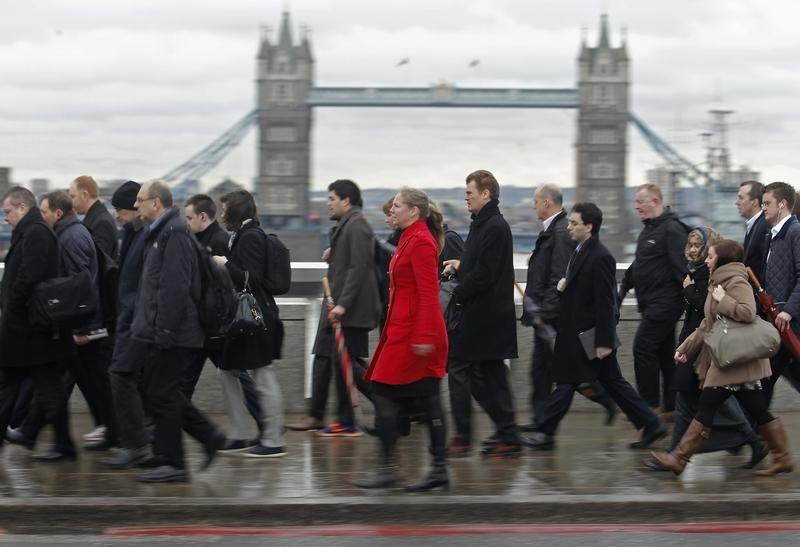By Patricia Reaney
NEW YORK, March 23 (Reuters) - The biggest obstacle to women receiving equal wages is the sorting of the sexes into different jobs and industries, while differences in education, age and experience account for only a small portion of the gender pay gap, according to new research.
Although U.S. Census figures show women comprise 47 percent of the workforce and are more likely to earn a college degree, they still hold a disproportionate share of lower-paying jobs, while men dominate executive positions.
"For a whole bunch of reasons, through the education system and the workplace, women are being pushed into different kinds of roles," said Andrew Chamberlain, chief economist at jobs and recruiting marketplace Glassdoor.
"This is the single largest factor we see contributing to today's gender pay gap," he said in an interview.
Chamberlain used data from more than 500,000 salary reports on Glassdoor to compare the gender pay gap and identify patterns across industries and jobs that contribute to it in five countries.
It showed the pay divide ranged from 24.1 percent in the United States, where women are paid about 76 cents for every dollar men make, to roughly 22.8 percent in the United Kingdom, 22.5 percent in Germany, 17.3 percent in Australia and 14.3 percent in France.
When Chamberlain factored in controls for age, education, experience, occupation, industry, location and company, the adjusted pay gap fell to 5.4 percent in the United States and was similar across the five nations.
"It is still a highly significant and large gap," he said.
The pay divide varied by occupation and industry. It increased with age, from about 2 percent between the ages of 18-24 to more than 10 percent for women 55-64.
In the United States, the industries with the largest adjusted gender pay gap are healthcare and insurance, at 7.2 percent, followed by mining and metals, at 6.8 percent. The smallest is in aerospace and defense, and agriculture and forestry, at 2.5 percent.
Computer programmer, chef, dentist and executive were the occupations with the largest adjusted gender pay divides. The gap is smallest for jobs as social workers, merchandisers and research assistants.
"Women still bear a disproportionate share of care for elderly in the family and for children - that factor drives women into jobs that may be lower-paying but have more flexibility," said Chamberlain. "Those issues still haven't been corrected."
